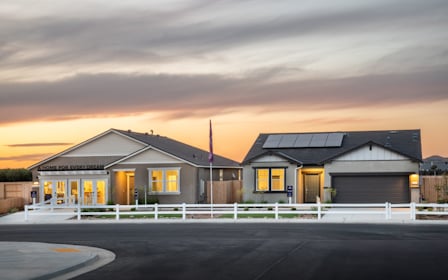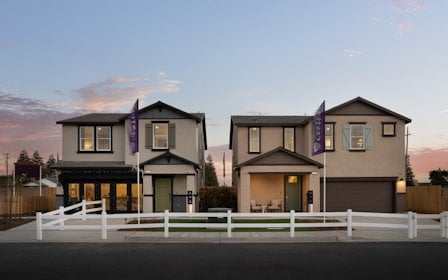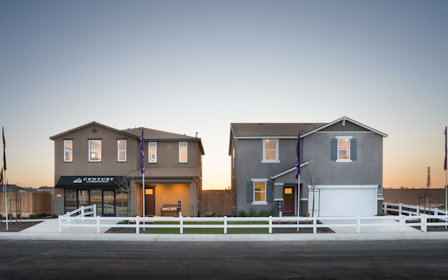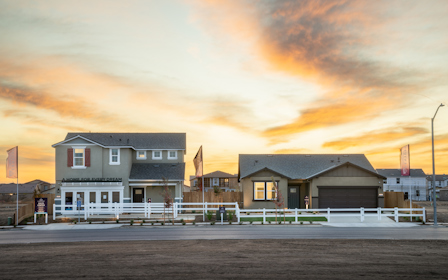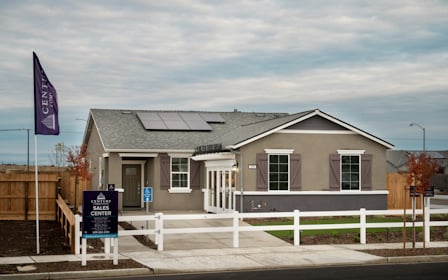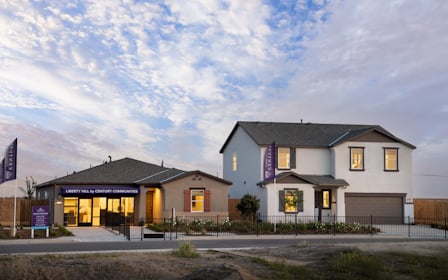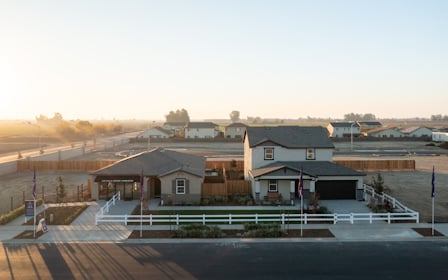Thanks to its warm weather, ample opportunity, and eclectic entertainment scene, California has always seen a massive influx of people. This has led to overcrowding and a high cost of living in some parts of the state, leaving many wondering where they can bring their California dreams to life. We’re happy to report there’s an area in The Golden State that offers everything a new resident could desire—The Central Valley.
If you like the idea of moving to California but want to avoid the hassle of Los Angeles (LA) or San Francisco, keep reading. We’re covering everything you need to know about the Central Valley and what makes it so desirable.
The Rising Popularity of the Central Valley in California
While other areas of California are losing residents, the Central Valley is gaining them. In fact, it's projected to have the fastest population growth in the Golden State through 2060. The California Department of Finance projects the Central Valley will add roughly five million residents to the area. What’s causing this boom? Mostly the migration from more expensive coastal counties seeking a lower cost of living, abundant natural areas, and a hot job market.
Where Is the Central Valley in CA?
The Central Valley in California is a 20,000-square-mile area located in the center of the state. It runs from about Redding to Bakersfield, and it's bordered by mountain ranges on almost all sides. Despite its length, the Central Valley is only around 50 miles wide.
What are the Cities in the Central Valley of California?
There are quite a few California Central Valley cities, including Redding, Chico, Sacramento (the state capital), Stockton, Modesto, Merced, Fresno, and Bakersfield. As the region attracts more residents, many other smaller towns and urban centers are popping up in the area.
Advantages of Living in the Central Valley
What's interesting is that many of the Central Valley’s new residents are not coming from other states, but rather from other parts of California. People from San Francisco and LA are migrating east and north respectively to escape high property prices and crowded streets. Overall, there are multiple compelling reasons for Californians to start calling the Central Valley home.
1. Affordable Real Estate Market
It's no secret that home prices are much higher in California than in the rest of the US. However, big cities tend to skew the results, so it's important to look at housing by region.
According to the California Association of Realtors (CAR), the statewide median home sale price in the state in October 2023 was $840K. However, in the Central Valley, the median price was only $473K, which is roughly 44 percent less than the state's average. The only cheaper area to buy a house in California is the "Far North" region, which has a median sale price of $376K.
But why are there so many affordable homes in the Central Valley? While exact data is unclear, the strong housing market can potentially be chalked up to a few defining characteristics:
- Rising Demand Means More Construction—Since the Central Valley population is expected to increase, it makes sense for developers to invest in the region. As new homes are built, they drive the median price down as supply matches demand.
- Lower Sales Tax—Sales tax in California's big cities is almost 10 percent, which is far too high for many residents. By comparison, sales tax in Fresno is a little under eight percent, making it cheaper to buy almost anything.
- More Land—Building a new home in LA or San Francisco is a major hassle because the areas are already so developed. However, with so much empty land in the Central Valley, it's much easier for developers to break ground and build new homes, making them far more affordable.
2. Thriving Job Market
While the unemployment rate in the Central Valley is a bit higher than other regions, its economy is also growing rapidly. In fact, National Business Magazine found seven companies based in the Central Valley experienced monumental growth from 2019 to 2022, indicating a healthy economy.
Currently, agriculture is still the largest sector within the valley, but other growing industries include healthcare, logistics, construction, HVAC systems, and business products and services (i.e. software companies). Plus, with the growing popularity of remote work, many new residents can find jobs in other regions and states while enjoying the perks of living in the Central Valley.
Overall, some Central Valley cities, such as Salinas and Sacramento, have white-hot job markets, and these are the areas expected to grow the most over the next few years.
3. Access to Nature
Because the Central Valley is not overdeveloped like Southern California or Silicon Valley, it still has tons of natural beauty and green spaces. The Central Valley is home to 21 state parks, seven wildlife refuges, four national forests, three national parks, and two national monuments. On top of these areas, the Central Valley is also home to abundant farmland and wide-open prairies. Compared to the urban jungles of Los Angeles and San Francisco, this area is practically untamed and wild.
Disadvantages of Living in California's Central Valley
Although there are numerous perks to moving to the Central Valley, the region isn't without some downsides. Before moving here, it's imperative to understand the whole picture, including disadvantages like:
- Living Far From Major Cities—Technically, Sacramento and Fresno are big cities, but they pale in comparison to LA. If you like being close to all the action, you'll have to drive several hours to get anywhere.
- Very Hot Weather—The Central Valley is great for farming, but it also traps heat and air pollution. Smog has always been a problem in California, but it can be worse in the Central Valley compared to coastal areas. During the summer, you can expect 90 and 100+ degree days throughout the season. Fortunately, during the winter, temperatures cool, and the Valley can be quite pleasant.
- Natural Disasters—California is well-known for two types of disasters: wildfires and earthquakes. While quakes can occur anywhere in the state, wildfires are far more common in drier regions like the Central Valley. Additionally, the area can experience drought conditions in certain areas, meaning residents have to conserve water throughout the year.
Cost of Living in the Central Valley
The cost of living in the Central Valley is roughly six percent less than the national average, although the breakdown is not uniform across categories. For example, the median home price is about 47 percent less than the national average and far less than the rest of California. However, Fresno specifically is at the average. This reduction is due in part to more new construction homes in Central Valley popping up in recent years.
Healthcare costs are also slightly lower, but groceries and other goods are all higher than the national average. That said when compared to the rest of California, the Central Valley is much more affordable. For example, groceries are 16 percent more expensive than the national average in the state, but only seven percent more expensive in the Central Valley.
Things to Do in the Central Valley of California
Some Central Valley cities have more to do than others, with places like Fresno, Stockton, and Sacramento having the most amenities. Here's a quick overview of the main things to do in the Central Valley.
Iconic Landmarks
The Central Valley has both natural and artificial landmarks throughout the region. Up north, you can check out the state capitol building or the iconic Golden 1 Center, where the Golden State Warriors play.
In the mid-valley, there's the Railtown 1897 State Historic Park in Modesto or the Forestiere Underground Gardens in Fresno. In the Lower Valley, check out the César E. Chávez National Monument or wander through the Silver City Ghost Town.
Entertainment
If you're a sports fan, you may want to live in or around Sacramento for easy access to the stadium on game day. More of a history buff? There are plenty of museums and ghost towns, where you can explore the history of the Central Valley up close. There are also children's museums in Chico and Fresno.
Culinary Scene
One of the perks of living in the Central Valley is that you're close to different farms and agricultural centers. Many smaller operations have started hosting farm-to-table experiences, so you can learn about the food you eat while simutaneously enjoying some of the freshest dishes possible.
Festivals
Because the Central Valley spans so much distance, the area features a variety of festivals. During the holiday season, most cities host a light festival, such as the Stockton Holiday Lighted Boat Parade. In February, you can see the almond trees in bloom during the Capay Valley Almond Festival.
Other festival highlights include the San Joaquin Asparagus Festival, the Clovis Rodeo, Stockton Beer Week, and the Albarino Wine Stroll. No matter what you're into, there's likely a festival celebrating it in the Central Valley.
California’s Central Valley Is the Perfect Blend of Rural and Suburban Living
As you can see, the Central Valley is a haven for those who love California but don’t love the traffic and soaring real estate prices of the coast. With affordable housing, tons of amenities and cultural experiences, and plenty of space, the Central Valley is a thriving region. It's the perfect place for anyone looking to call California home.
Buying a home in the Central Valley doesn't have to be an ordeal. Thanks to an abundance of new construction homes in Central Valley, you can find a move-in ready home much faster than you might expect. Whether you're looking at Northern or Central California, we offer high-quality properties you will love. Explore homes online and see what's available today!
